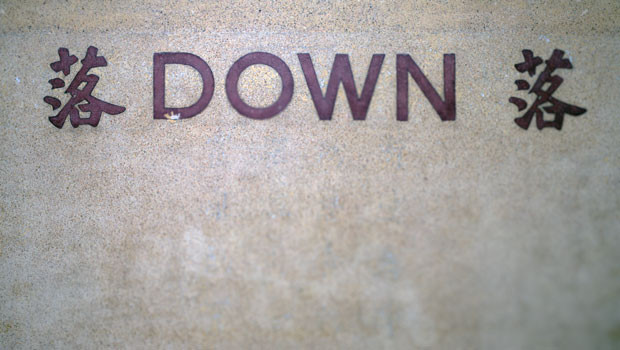Asia report: Stocks struggle amid mixed China data, Hong Kong typhoon

Markets across the Asia-Pacific region struggled on Monday, in response to disappointing economic data from China, including lower than anticipated second-quarter GDP growth.
Patrick Munnelly, market analyst at TickMill Group, said Asian equity markets started the week on a subdued note as participants digested mixed economic growth and activity data from China.
The closure of markets in Japan due to a holiday and disruptions caused by a typhoon in Hong Kong further thinned trading conditions.
“The Shanghai Composite underperformed, as there were no Stock Connect flows due to the unscheduled closure in Hong Kong,” Munnelly noted.
“Investors reflected on a mixed bag of tier one releases from China - the data indicated that economic growth was stronger than expected on a quarter-on-quarter basis, but it disappointed on a year-on-year basis.
“Chinese industrial production exceeded estimates in June - 4.4% versus expected 2.7% - while retail sales fell short - 3.1% versus expected 3.2%.”
Munnelly said the data could be distorted by the effects of the lockdowns in China last year.
“Additionally, market attention was focused on the People's Bank of China (PBoC), which maintained its one year medium-term lending facility rate at 2.65% and rolled over the maturing loan amount.”
Stocks fall on relatively quiet day for region
In mainland China, both the Shanghai Composite and Shenzhen Component ended in the red, down 0.87% at 3,209.63 and 0.63% at 11,010.36, respectively.
Notable decliners in Shanghai included Heilongjiang ZBD Pharm and Guanghui Logistics, plunging by 9.97% and 8.92% respectively.
Japanese markets were closed due to the Marine Day holiday.
In South Korea, the Kospi fell slightly by 0.35% to end at 2,619.00.
Korean firms Hanwha Aerospace and Hanwha Solutions saw significant drops, falling 3.53% and 3.48% respectively.
Australian shares also edged lower with the S&P/ASX 200 dropping a slight 0.06% to close at 7,298.50.
Amongst the major movers, Endeavour Group plunged 9.9% while Sayona Mining dropped 7.9%.
Across the Tasman Sea, New Zealand's S&P/NZX 50 slipped 0.62% to close at 11,938.92.
Oceania Healthcare was amongst the hardest hit, down 5%, followed by Tourism Holdings which fell by 3.61%.
Hong Kong markets were closed due to Typhoon Talim storm warnings, which continued through the afternoon.
In the currency market, the yen strengthened 0.32% on the dollar to trade at JPY 138.36.
The Aussie and the Kiwi, on the other hand, weakened against the greenback, changing hands at AUD 1.4673 and NZD 1.5775, respectively.
Commodity markets also took a hit with oil prices trending downwards.
Brent crude futures were last down 1.2% on ICE at $78.91 per barrel, while the NYMEX quote for West Texas Intermediate slid 1.35% to $74.40.
China GDP falls short of second-quarter expectations, youth unemployment hits record
On the data front, China’s economy posted slower growth in the second quarter of 2023, coming in at 6.3% year-on-year.
That fell short of the 7.3% expansion predicted by analysts surveyed by Reuters, marking a slowdown in the pace of the world's second-largest economy.
Compared to the first quarter of the year, the economy grew at a decelerated pace of 0.8%, down from the 2.2% quarter-on-quarter expansion recorded in the first three months of the year.
“The recovery is disappointing, but all the same the economy isn’t crashing,” said Pantheon Macroeconomics chief China economist Duncan Wrigley.
“China will want to keep ammunition in reserve, in case global or domestic conditions deteriorate.
“Policymakers are likely to decide on a package of fiscal, quasi-fiscal and targeted monetary policy measures to boost domestic demand in the second half.”
On another note, the nation's unemployment rate among the young demographic - ages 16 to 24 - reached a record high of 21.3% in June.
China's central bank meanwhile held steady on monetary policy, with the People's Bank of China (PBoC) maintaining its medium-term lending facility (MLF) loans rate at 2.65%, pumping CNY 103bn into the banking system via the one-year loans.
The PBoC affirmed the injection would adequately cater to financial institutions' liquidity needs and ensure a "reasonable and sufficient liquidity" within the system.
At the same time, the central bank carried out a reverse repurchase operation, injecting another CNY 33bn via seven-day reverse repos at an unaltered rate of 1.9%.
Reporting by Josh White for Sharecast.com.